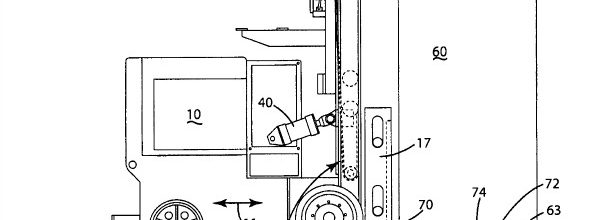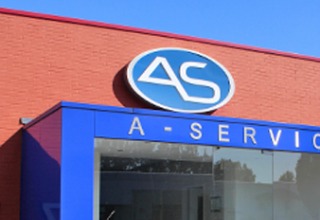AUTOMATION OUTBOUND difficult but not impossible part 2
* Please notice the illustration above has nothing to do with our patent application for project gamba
Having read this article, you will know which systems are available on the global market for the automated loading of standard trailers, and which advantages and disadvantages these systems have.
I’ll be frank with you. Outbound automation is difficult. I have previously written another knowledge article about this topic.
Globally, there are currently three different groups of systems for outbound automation: one-shot loading, row-by-row loading and pallet-by-pallet loading. In this article I will explain the current options further, and introduce the new system we have developed for the automated loading of pallets into standard trailers.
System group 1: one-shot loading
The entire load of pallets is arranged in advance on a large carrier (a thin plate, a conveyor belt or skis) and is placed inside the trailer in one operation. Once the load is in the trailer, the carrier is withdrawn. The maximum capacity is three trailers per hour.
During lifting, the load and the carrier move as one whole. Because trailers have little space, this system requires accurate alignment in all three dimensions. With heavy loads of up to 25 tonnes, this is complex and the risk of damage to the trailer, load or system is quite high. I do wonder whether any insurer would be prepared to cover incidental damage in this case. After all, the load belongs to party A, the equipment to party B and the trailer often belongs to another party.
Advantages:
- Loading is relatively rapid. A loading cycle takes around 8 minutes.
Disadvantages:
- The system is complex and heavy and requires an expensive measurement and alignment system.
- JIT loading is not possible. The load must be ready before the trailer arrives, and the dock is physically blocked. This means waiting time for the pallets and an obstruction in the logistical process.
- With plate systems, partial loads are not possible.
- A ski system is only suitable for Europallets and not for industrial, block or CHEP pallets.
System group 2: row-by-row loading
A specially-equipped automatic forklift drives in and out of the trailer and moves the load of pallets inside, row by row. The maximum capacity is four trailers per hour.
Advantages:
- Compared to one-shot loading, alignment is easier.
- Loading is relatively rapid. A loading cycle takes around 8 minutes.
Disadvantages:
- The costs of the measurement and alignment systems are still high.
- Forklifts are counterbalanced vehicles and are thus heavy. The load is too great for standard trailer floors. Unless the trailer is fitted with a special floor, this system is thus only suitable for very light loads.
System group 3: pallet-by-pallet loading
Self-driving forklifts, otherwise known as AGVs, drive in and out of the trailer. This makes the system flexible, but it also leads to a number of critical issues. AGVs calculate their route and loading pattern automatically. They are also very dependent on the overhang of the pallets. AGVs move using sensors, which are not yet able to measure the space inside trailers effectively. This means their speed is low, and thus also the capacity of the system. In the most ideal situation, an AGV can load one trailer per hour. In Europe, trailers are generally narrow, with a small loading tolerance. For this reason, this system is not used here. In America, where tolerances are somewhat greater, several of these systems are in operation.
Advantages:
- JIT loading possible
- Flexibility
Disadvantages:
- Low capacity
- Works poorly with pallets with large overhang
Each system meets a specific demand, but at present there is no system that works in all situations. At Asbreuk Service, we have taken great strides in the development of such a system:
System 4: Gamba
We believe that an all-in-one solution for outbound automation will not result from the continued development of any of the above systems. That’s why we have developed a new concept, with the working title GAMBA. This system has been validated with a successful test, patent applications have been filed and we are very busy developing the prototype to bring it to a market player. The maximum capacity: Four to five trailers per hour.
Advantages:
- High capacity
- JIT loading possible
- Can handle full and part loads
- No special alignment of the system required
- Suitable for all pallet types
- Fits all standard trailers
- Easy to incorporate into all intralogistics systems
- Docks not physically blocked
Disadvantages:
- Available after next year: early 2019
Do you have any questions, remarks or are you curious about the GAMBA project? Then please get in touch. We will be happy to discuss this further with you.
e-mail: maas@a-service.nl
telephone: 0541-521206.


